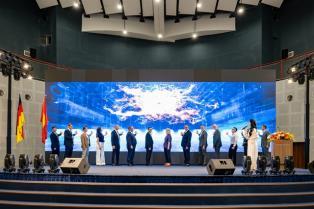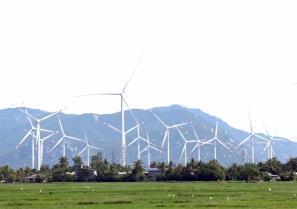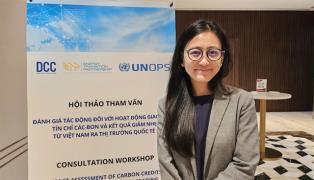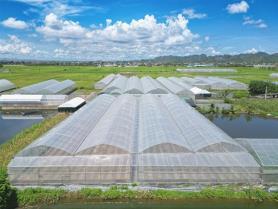The agricultural sector of Hậu Giang Province is ramping up efforts to strengthen extension services and increase support for farmers, aligning with the growing demands of modern markets.
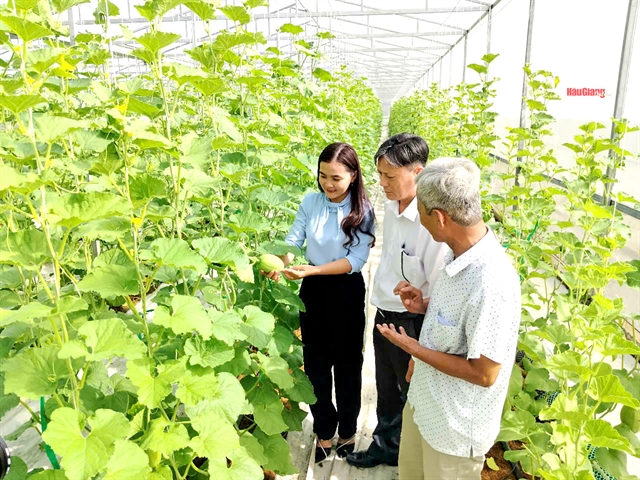
HẬU GIANG — The agricultural sector of Hậu Giang Province is ramping up efforts to strengthen extension services and increase support for farmers, aligning with the growing demands of modern markets and contributing to the broader goal of building an ecological agriculture sector, modern rural areas, and a civilised farming community.
Over the past five years, the province has implemented a coordinated and flexible agricultural extension programme, deploying effective models tailored to real-life needs and development trends in the sector.
A wide-reaching network of agricultural extension officers — from provincial to commune level — has actively supported and guided farmers, helping improve productivity, and facilitating the timely dissemination of policies and technological advancements to the grassroots level.
Through a variety of training courses, farmers have been able to put 50 per cent to 70 per cent of the content into practice.
These courses are increasingly specialised and diversified, focusing on areas such as technical capacity building, food safety, product traceability, and marketing and communication skills for agricultural goods.
Cooperative models benefit from grassroots support
Trần Văn Huynh, Director of Hai Huynh Cooperative in Vị Thắng Commune, Vị Thủy District, noted that his cooperative has greatly benefited from support provided by local extension officers since its inception.
"Thanks to their guidance, we’ve managed to survive and thrive, especially in providing irrigation services, plant protection, and agricultural supplies. We also partner with farmers in seed production and distribution,” said Huynh.
He expressed his hope that community-based agricultural extension groups will continue to expand and become more robust, enabling farmers to successfully apply modern production techniques and high-tech agriculture models.
Meanwhile, farmer Huỳnh Ngọc Điền from Phú Hữu Commune, Châu Thành District, likened the extension officers to a “vital bridge” between farmers, the agricultural sector and scientists.
“They’ve played a crucial role in recent years, particularly in guiding us on crop care, disease control, and coping with the impacts of climate change and high tides,” Điền said.
“I hope the extension teams will focus more on crop-specific technical training to help farmers reduce investment costs and increase profit margins,” he added.
From 2020 to 2025, Hậu Giang implemented 137 agricultural extension models across a wide range of fields — from crop and livestock farming to circular economy models integrated with agricultural tourism. The total budget for these activities exceeded VNĐ85 billion (US$3.3 million).
Among the most notable initiatives were those applying advanced technologies such as drone spraying, automated irrigation systems, and full-scale mechanisation.
These helped to enhance productivity and production efficiency.
The province’s Agricultural Extension and Agricultural Services Centre has also promoted production according to international standards such as GlobalGAP and VietGAP, food safety certification, and the issuance of planting area codes.
These measures aim to improve product value and market access through improved traceability and stable consumption channels.
Challenges and a vision forward
Despite these achievements, Lê Minh Thắng, deputy director of the Agricultural Extension and Agricultural Services Centre of Hậu Giang Province, acknowledged several persistent challenges.
“Our models are still small-scale and fragmented. The value chain linkages remain unstable, resources are limited, and the effects of climate change are increasingly harsh. These issues demand a fundamental transformation in how we think and act in agricultural extension.”
According to Thắng, the province plans to prioritise high-quality, low-emission rice farming models in alignment with green growth strategies.
These will incorporate scientific and technological advances while ensuring food safety.
Additionally, Hậu Giang will focus on expanding concentrated fruit farming areas, especially for key crops such as jackfruit, seedless lime, pomelo and durian — emphasising sustainable intensification and quality assurance.
“Our strategy involves linking production with processing and consumption to enhance value chains and competitiveness in domestic and international markets,” Thắng said.
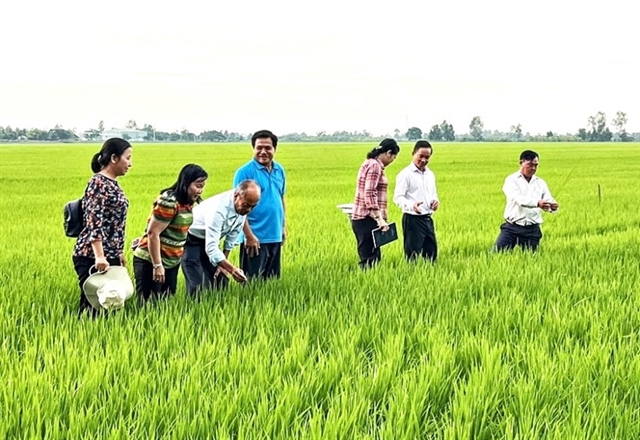
Digital transformation and community-based models
Võ Xuân Tân, Deputy Director of the provincial Department of Agriculture and Rural Development, outlined several priorities for the coming years.
These include strengthening organisational capacity, improving the digital and communication skills of extension personnel, and reforming training methods by placing farmers at the centre of the process.
“We will promote a ‘learning through models, learning from practice’ approach, integrating information technology and combining online and in-person training formats,” Tân explained.
The agriculture sector is also encouraging localities to propose innovative and economically viable models.
Key areas of focus include ecological and climate-smart farming methods that adhere to VietGAP and GlobalGAP standards, the assignment of planting area codes, and product traceability systems.
These are expected to strengthen production–consumption–processing–trading linkages.
The province is also calling on businesses and cooperatives to play a more active role in extension programmes, supporting supply-demand connections and expanding the market reach of Hậu Giang’s agricultural brands.
Towards a smart and sustainable agriculture
In tandem with these efforts, the province is pushing for greater socialisation of agricultural extension — combining State-led initiatives with private sector, community-based, and social extension models.
This is seen as crucial for meeting the increasingly diverse demands of production and markets.
Ultimately, Hậu Giang’s agricultural sector aims to build a sustainable, smart, and internationally integrated farming economy.
These strategies are not only expected to improve farmers’ livelihoods and protect the environment but also to contribute to the socio-economic development of the greater Cần Thơ area in the context of its planned administrative consolidation. — VNS

